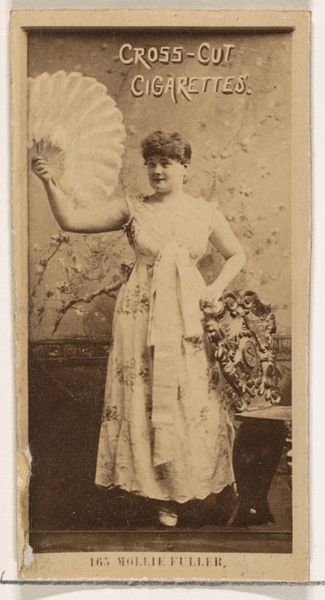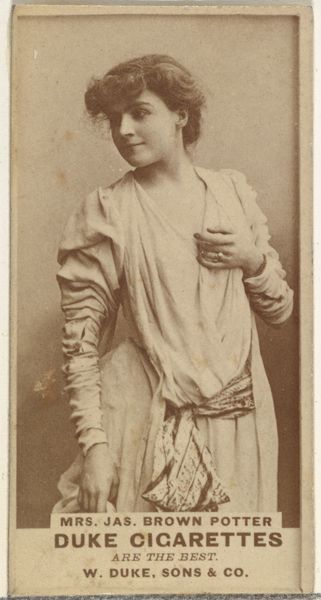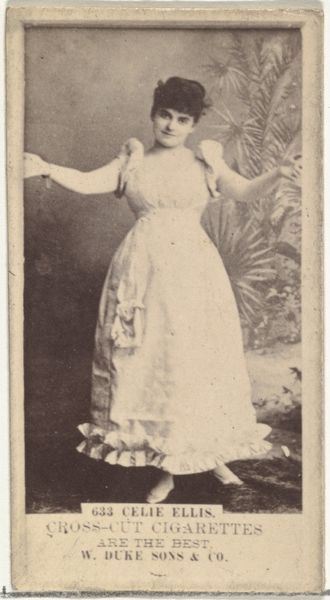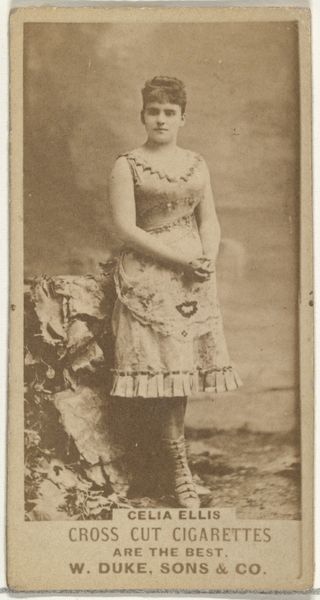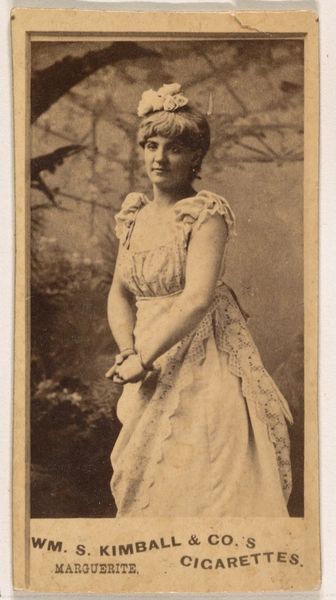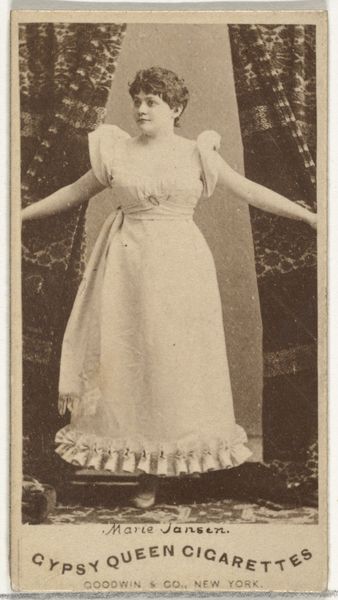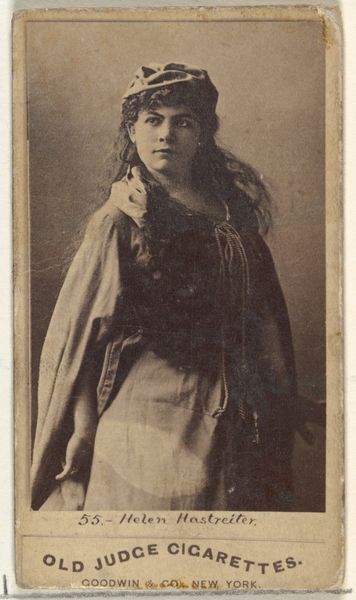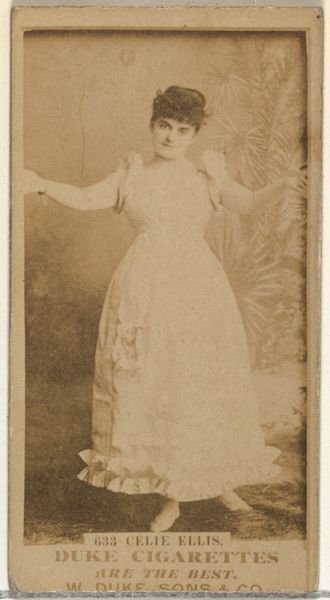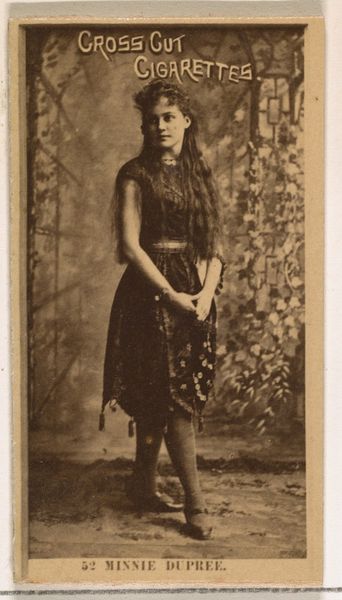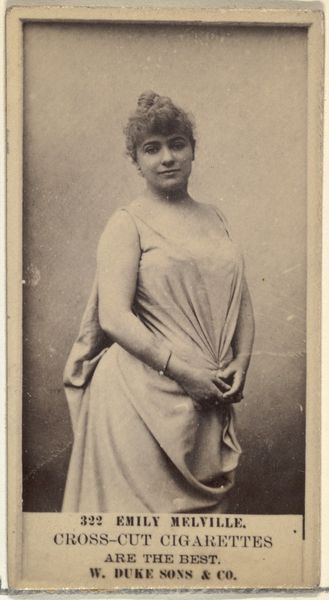
Marie Janson, from the Actors and Actresses series (N45, Type 1) for Virginia Brights Cigarettes 1885 - 1891
0:00
0:00
print, photography
#
portrait
# print
#
impressionism
#
photography
Dimensions: Sheet: 2 3/4 x 1 3/8 in. (7 x 3.5 cm)
Copyright: Public Domain
Editor: This is a photo, turned into a print, of Marie Janson from the Actors and Actresses series made between 1885 and 1891, by Allen & Ginter, a cigarette company. The image feels very posed and almost…performative. I wonder how much of that is inherent in early portrait photography? What do you see when you look at it? Curator: I see a fascinating intersection of commerce, celebrity, and burgeoning female representation. Cigarette cards, like this one, were early forms of advertising that also disseminated images of actresses. This image is far from being empowering for woman: it's trapped in objectification, commodification, and a reinforcement of societal beauty standards for increased profit. Can we really disentangle Marie's individual agency from this economic machinery? Editor: That's a good point; the actress becomes just another commodity being marketed by the cigarette company. So, do you think this sort of ‘popular’ portraiture helped or hurt the cause of actual equality for women at the time? Curator: That’s a complex question. On one hand, visibility matters, right? Seeing women in positions of relative power, even within a constructed image, can be aspirational. But simultaneously, it perpetuates this notion that a woman's value is primarily tied to her image, feeding into patriarchal structures that undermine true equality. And consider this: whose gaze are we centering? Is it the male smoker buying the cigarettes, or the women themselves? Editor: I guess it’s both complicated and contradictory. I had originally only viewed this as a simple portrait, but now I am seeing that the context and reception really inform the way we engage with the image. Curator: Exactly. By interrogating the underlying power dynamics, we get closer to understanding the artwork’s true impact and relevance.
Comments
No comments
Be the first to comment and join the conversation on the ultimate creative platform.
